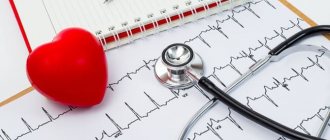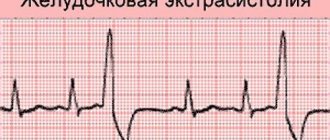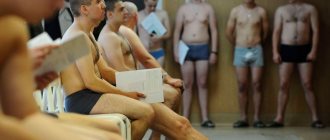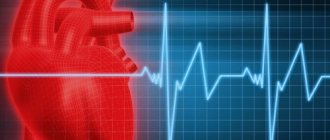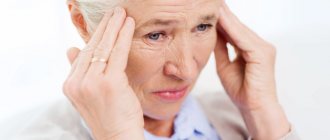Are you drafted into the army with dystonia? We will help you! Wanting to avoid military service, young people of military age often begin to rely on various diseases. There are many indications for conferring unfitness for military service, but for each individual case the medical commission makes different decisions. This is due to the varying degrees of confirmation of symptoms in all conscripts. Regarding the common diagnosis of VSD, it is worth understanding that young men with dystonia are recruited into the army who cannot confirm the type and degree of the disease.
Causes
Most often, NCD develops after severe emotional stress or mental trauma; dystonia is inherited and is also the result of hormonal shifts.
When examining a patient by a doctor, an active “play of the pupils”, rapid pulsation of the carotid arteries is noted, the person is unable to make a forced exhalation. During the period of exacerbation of the disease, areas of pain in the intercostal muscles are detected - especially in the 3rd-4th intercostal space. The disease is classified according to several criteria - by etiology, by severity, by clinical manifestations. According to the etiology, NCD can be essential, psychogenic, infectious-toxic, caused by professional factors, arising from physical stress. Clinical syndromes: myocardial dystrophy, cardiac and tracheocardial, hypertensive and hypotonic, respiratory, asthenic, as well as peripheral vascular disorders.
There are three degrees of the disease - mild, moderate, severe. In general, NCD is divided into hypertensive and hypotonic types, they differ not only in the difference in blood pressure, but also in symptoms.
Thus, patients diagnosed with “neurocirculatory dystonia of the hypotonic type” have pale skin and an asthenic physique; they complain of muscle weakness and chilliness. Patients with hypertensive type dystonia are usually overweight. Symptoms of the disease are headaches, fatigue, rapid heartbeat.
The impetus to the disease
The question of why someone gets sick and someone doesn’t is inherent in VSD just like other diseases. In the etiology of neurocirculatory dystonia, the main factors can be identified:
- The family nature of the disease, where heredity plays a significant role, however, it should be borne in mind that it is not the disease that is transmitted, but the characteristics of the organism, which is similar to the parent. In the case of vegetative-vascular dystonia, the mother has a greater chance of transmitting a predisposition to the pathology;
- Social environment, which includes living conditions and relationships in the team, affecting the psycho-emotional state;
- Temperament and personality traits;
- History of traumatic brain injury and neuroinfections;
- Hormonal disorders;
- Infectious and allergic diseases;
- Excessive mental and physical stress;
- Change of climatic living conditions.
The combination of several or all factors together leads to the body's reaction to stimuli. This reaction causes the formation of pathological conditions that are manifested by disorders:
- Metabolic processes;
- Innervation of internal organs;
- Works of the gastrointestinal tract;
- In the blood coagulation system;
- Activities of the endocrine system.
The course of the mother's pregnancy, hypoxia and birth trauma also have a negative impact on the state of the autonomic system and can cause vegetative-vascular dystonia in children.
Inconsistency between the systems ultimately leads to a vascular response—their spasm. Thus, the manifestation of neurocirculatory dystonia begins.
Top>>>
Symptoms
This disease has many faces, it can manifest itself in very different ways. In this condition, the activity of the cardiovascular system is disrupted, which responds with aching or stabbing pain in the heart, interruptions in the functioning of the organ or acceleration of its rhythm, pulsation of the vessels of the neck and head. Pain occurs after suffering stress, overwork, due to weather changes.
The next morning the face is swollen. Asthenic syndrome develops, due to which a person feels weak, quickly gets tired, and his performance decreases.
Disturbances are also observed in the respiratory system: shortness of breath appears when walking quickly, a feeling of incomplete inspiration, a lump in the throat, the condition worsens in stuffy rooms. Sometimes there is a fear of suffocation.
At night, vegetative crises often occur: headaches, sweating, dizziness, and darkness in the eyes. The person may faint or lose consciousness. The duration of such a crisis is 20–30 minutes, but sometimes this condition can last for several hours. Sometimes it is accompanied by excessive urination or loose stools. There are also slight temperature fluctuations in one direction or another.
And yet: what to do with it?
We can talk about neurocirculatory dystonia for a long time and a lot, fortunately there are numerous names for this pathology, and this allows for diversity. But those who have such “happiness” are looking for ways to escape from this symptom complex, which pretty much poisons life and manifests itself in the most unforeseen situations. In general, a significant part of humanity is occupied with the question of how to treat neurocirculatory dystonia, which has a dozen other names. After all, changing the name will not affect the patient’s well-being in any way.
Oddly enough, vegetative-vascular dysfunction does not like physical inactivity. And despite the fact that the manifestations of the disease are especially noticeable after physical activity, physical exercise not only does not harm the patient, but is also indicated. True, we should be talking about targeted, therapeutic physical education, dosed and deliberate.
Mandatory adherence to the work and rest regime is also an integral part of the treatment process. Of course, working night shifts, lack of sleep, and spending a long time near the monitor are unlikely to help you feel light in your head and body. But fresh air, quiet evening walks, a warm bath with soothing herbs, on the contrary, will ensure good healthy sleep and improve your mood.
Patients should pay special attention to their psycho-emotional state. Avoid stressful situations, engage in auto-training, take soothing tea and do everything possible to create a calm, friendly environment at home and in the team for yourself and those around you.
No matter how trivial it may sound, diet also plays a significant role here. Neurocirculatory dystonia does not like spices, spicy foods, or alcohol. Anything that excites the nervous system can aggravate the process, so it is better to avoid excesses and not overexert yourself. But foods rich in potassium (eggplants, potatoes, bananas, prunes and apricots) will “like” the “capricious” nervous system.
Top>>>
Diagnostics
Correct diagnosis requires examination by several specialists - an endocrinologist, cardiologist and neurologist. It can be difficult to establish an accurate diagnosis, since the disease has nonspecific symptoms, which are characteristic, among other things, of quite serious and dangerous pathologies. Therefore, it is necessary to exclude neurosis, thyrotoxicosis, ischemic heart disease, heart disease, etc. This is why a number of studies are being carried out. The patient undergoes an ECG, echocardiography, chest x-ray, 24-hour blood pressure monitoring, an orthostatic test, ultrasound of internal organs, and a blood test for hormone levels.
Treatment
First of all, they eliminate the cause of NCD – stressful situations, by improving the situation in the family and eliminating conflicts at work. If we are talking about an infectious-toxic form of dystonia, then it is necessary to eliminate the sources of infection - sanitize the oral cavity, cure foci of infection, and perform a tonsillectomy. If the impact is caused by physical or professional factors, their influence is eliminated, which sometimes requires a change of place of work. neurocirculatory dystonia, treatment is also carried out in a psychotherapist’s office. Sometimes rational psychotherapy turns out to be a more effective tool than medication. During the session, the nature of the disease is explained to the patient, attention is focused on a favorable prognosis, and he is taught the techniques of self-hypnosis, auto-training and muscle relaxation.
Sometimes psychotherapy sessions turn out to be more effective if the patient’s relatives are present - they are also informed about the cause of the problem and ways to overcome it.
At the same time, the interaction between the hypothalamus, limbic zone of the brain, and internal organs is restored. For this purpose, drug therapy is used, sedatives, antidepressants, tranquilizers, nootropics, and cerebroangiocorrectors are prescribed. They calm the nervous system, relieve feelings of fear and anxiety, and reduce excitability. Also, by taking medications, it is possible to improve the quality of processes and improve blood circulation, improve memory. Cerebral circulation is also normalized, and it is possible to reduce the frequency and severity of angiodystonic headaches, dizziness, etc.
Taking beta-blockers normalizes the tone of the sympathoadrenal system in the hypertensive type of NCD with high sympathicotonia.
Along with pharmacotherapy drugs, herbal infusions are used, which include chamomile, valerian, peppermint, motherwort, lemon balm, etc. Improvement after taking teas, decoctions and tinctures of these herbs occurs within 2–3 weeks, but to achieve a lasting effect it is necessary 6–8 months. Treatment is carried out according to the following scheme: if the treatment has a positive effect, a break is taken after 1–2 months, after which the collection is changed. Even if the disease has subsided, it is good to take herbal preparations for preventive purposes - for 2 months, 2 times a year. Herbal medicines have also proven themselves to be quite good. Thus, neurocirculatory dystonia of the cardiac type can be treated with the drug “Persen”.
Physiotherapy has also proven itself well. The “electrosleep” procedure (session – 20–40 minutes, course – 15 sessions) reduces the manifestations of extrasystole and cardiac syndrome. For hypertensive and hypotensive syndrome, arrhythmic syndrome, and severe symptoms of hypothalamic dysfunction, electrophoresis is useful, and for severe asthenia, a galvanic collar according to Shcherbak.
Water procedures are very useful - showers, douses, wet and dry wraps, as well as therapeutic baths - pine, pearl, nitrogen, radon, iodine-bromine, carbon dioxide, etc.
Recently, aeroionotherapy has become increasingly popular. For a collective session, Chizhevsky chandeliers are used. Such devices ionize the air, during which air ions are formed predominantly with a negative sign. During the session, the patient inhales ionized air. This helps reduce blood pressure by 5–20 mmHg. Art., slow down the heart rate, improve gas exchange, increase oxygen consumption. Aeroionotherapy helps combat symptoms such as insomnia, headaches, and weakness.
Often, patients with NCD are prescribed restorative, acupressure massage. Acupuncture normalizes the state of the central and autonomic nervous system, promotes adaptation of the body, enhances metabolism and the activity of internal organs, and relieves emotional stress. After a course of acupuncture, improvement is observed in 65–70% of patients.
The use of adaptogens helps reduce sensitivity to weather changes, weaken emotional sensitivity, and increase endurance during physical activity. For NCD, sanatorium-resort treatment is indicated, including a rest regimen, nutritional therapy, balneotherapy, and physiotherapy. As holiday destinations, preference is given to regions with a mild climate, which are not characterized by sudden changes in atmospheric pressure. These are resorts in the Baltic states, Leningrad and Kaliningrad regions, Belarus, Crimea, and Sochi.
Lifestyle also matters. If a patient is diagnosed with neurocirculatory dystonia of the hypertensive type, then he is prescribed a hypotensive diet. It involves limiting the amount of fluid and salt consumed. At the same time, the diet should include enough vegetables and fruits, especially those that contain sufficient amounts of magnesium and potassium. In pharmacies you can buy salt substitutes and potassium chloride. The patient is also advised to normalize their weight.
If NDC develops of the hypotonic type, such patients are recommended to drink a cup of strong tea or coffee in the morning or afternoon.
Disease or syndrome?
When discussing vegetative-vascular disorders and what to call them, scientists still haven’t decided. Vegetative-vascular dystonia is considered a more correct name, since it expresses the pathogenesis of the disease. The most recent trend in defining this condition was the syndrome of vegetative dystonia, which did not become an independent unit in the International Classification of Diseases (ICD).
The ICD 10 code for neurocirculatory dystonia is F45.3 , where the letter F indicates a psychogenic origin, which, in general, is the case. According to the same classification, NCD is recognized not as a disease, but as a symptom complex arising as a result of inadequate behavior of the autonomic nervous system (uncoordinated and unbalanced interaction of two parts of the ANS: sympathetic and parasympathetic). It is unlikely that people who are well acquainted with this complex of symptoms will “get better” from this, but today this is the case.
Vegetative-vascular dysfunction raises many questions when the time comes to repay one’s debt to the Motherland. How are neurocirculatory dystonia and military service compatible? As varied are the manifestations, so should be the approach.
Top>>>

